Recent Articles
Popular Makes
Body Types
10 Things You Need to Know About the 2018 Jaguar E-PACE
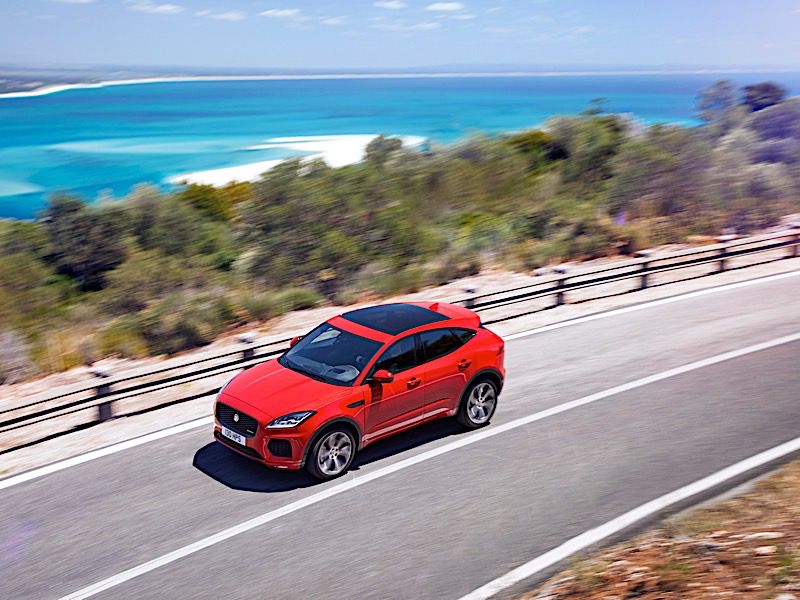
2018 Jaguar E Pace hero ・ Photo by Jaguar Land Rover
Ten years ago, Jaguar vehicles were the automotive equivalent of benchwarmers. You'd consider one only after nixing all your alternatives. Build quality was terrible, designs were neither original nor traditional, and resale values were abysmal. Today, though, the automaker has transformed itself from 2008's level. Following Tata Motors’ takeover that year, Jaguar introduced its best sedan of the new millennium: the XF. Soon after came the F-Type sports car, XE compact sedan, and F-Pace SUV, all helping erase the sins of yore. While it's not yet a volume player to the extent of luxury brands like BMW, Audi, and Mercedes-Benz, Jaguar is poised for serious sales thievery.
The all-new E-Pace compact SUV might push Jaguar over the edge. Entering a teeming segment, the E-Pace may quickly become the brand’s best-selling model. That is, of course, unless it's lousy. Check out 10 things to know about the 2018 Jaguar E-Pace and decide for yourself whether Jaguar is ready to topple the premium car market.
10. No, it’s not electric.
With almost every automaker debuting a pure electric or electrically assisted model, it’s more than forgivable to assume something named “E-Pace” is another such vehicle. However, the E-Pace is only powered by internal combustion engines. While there’s a good chance some future version of the E-Pace will offer e-assist power, it won’t be to satisfy a nameplate.
Jaguar is introducing a new electric vehicle this year, but it will be called I-Pace. The company’s naming scheme isn’t completely out of left field: Using the F-Pace as a reference point, a smaller SUV called the E-Pace makes sense. It’s all semantics and marketing, but we expect that more than a few Jaguar salespeople will encounter confused customers.
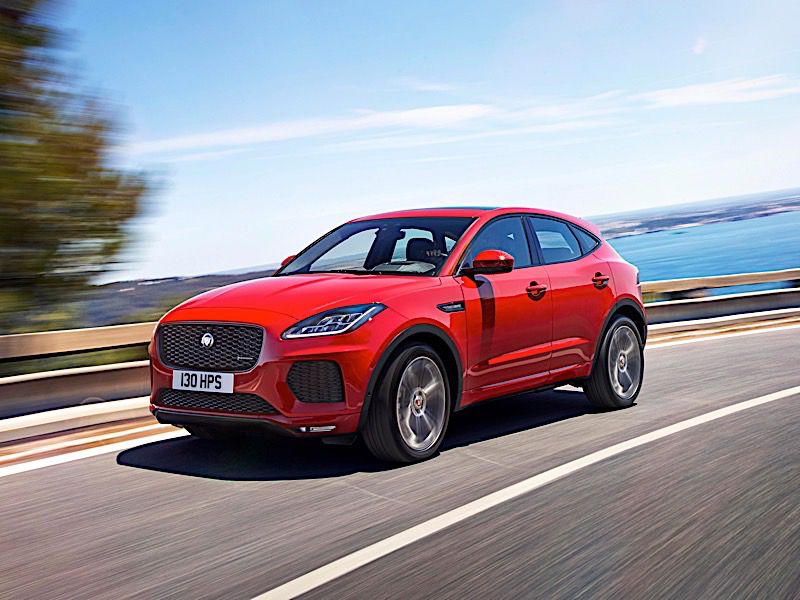
Photo by Jaguar Land Rover
9. Internally, it’s called the “cub.”
Because most vehicles begin development between three and five years before they’re shown to the public – even before they have a fit-for-print name – automakers give their upcoming models a codename. In the spy world, codenames are usually something cool like, “ace” or “raven,” but in the car world, it’s something more along the lines of “XP5-Alpha,” or some equally boring designation.
Jaguar must have thought alphanumeric codenames were boring, too –because it called the E-Pace the “cub” during planning. As an entry point into the Jaguar product family, the name suits the little SUV, but there’s more to it than just price and size. Jaguar's head of design, Ian Callum, said the big eyes and paws of a cub inspired the E-Pace’s large headlights and wheel sizes (up to 21 inches). At the base of the windshield, the outline of an adult Jaguar and its cub are etched into the black tint. More cub-like design cues appear inside, including Jaguar spotted print in the center cubby and center stack storage tray.
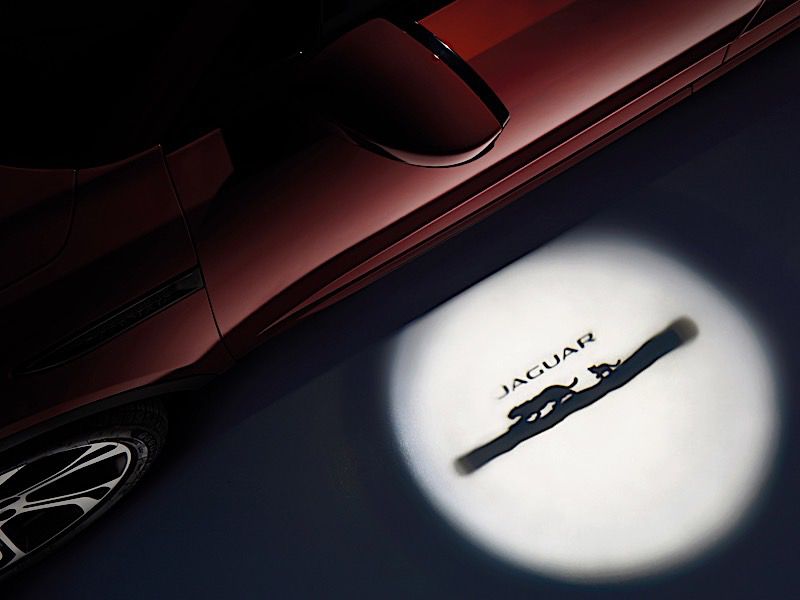
Photo by Jaguar Land Rover
8. PACE is part of a motto for Jaguar vehicles.
With as long and rich a heritage as Jaguar's, it follows that the automaker should draw upon its past to influence current models. When choosing a name for the F-Pace and E-Pace, Jaguar looked as far back as it could – to its founder, Sir William Lyons. “Pace” is pulled from one of “Mr. Jaguar’s” most famous quotes: “grace, pace, and space: the three traits all Jaguars should have.”
E-Grace or E-Space doesn’t sound quite as good as E-Pace, though Jaguar’s compact certainly satisfies all three qualities.
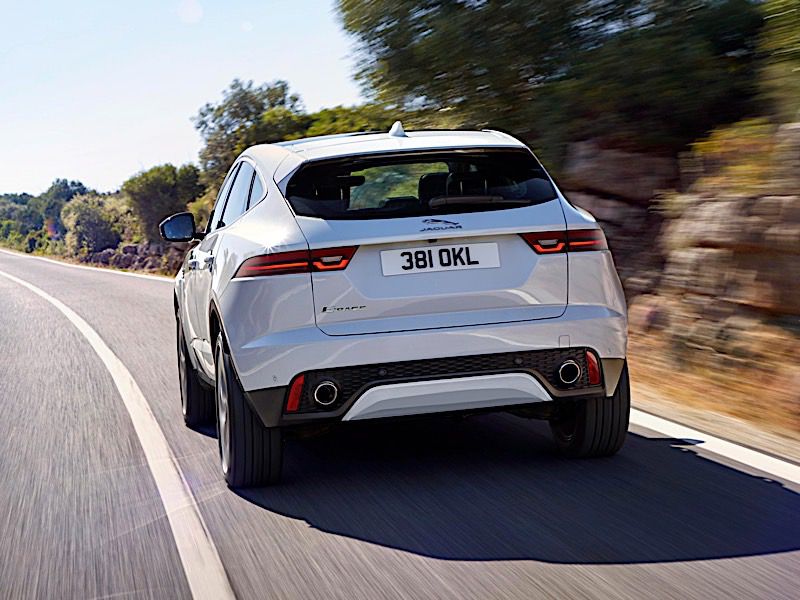
Photo by Jaguar Land Rover
7. It’s the first four-cylinder-only Jaguar.
The new E-Pace isn’t the only Jaguar to use a four-cylinder engine; both the XE and F-Type are available with Jaguar’s Ingenium forced induction four-cylinder. The E-Pace is, however, the only current Jag that isn't also offered with a larger engine.
The E-Pace P250 and P300 trims use the same 2.0-liter turbocharged four-cylinder but vary the boost levels. P250 models offer 246 horsepower and 269 lb-ft of torque, while P300 R-Dynamic models enhance output to 296 hp and 295 lb-ft of torque. All E-Pace models utilize a new ZF nine-speed automatic transmission with manual shift paddles on the steering wheel. P250 units hit 60 mph in 6.6 seconds, while P300 versions accomplish the task in 5.9 seconds.
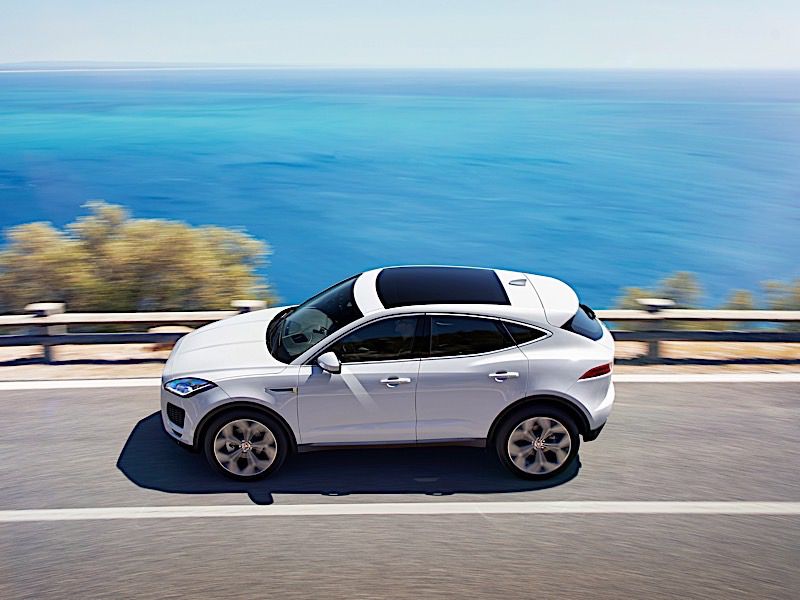
Photo by Jaguar Land Rover
6. This is the first Jaguar with an 'active driveline.'
Every E-Pace is equipped with all-wheel drive as standard, but only P300 R-Dynamic models utilize Jaguar’s first "active driveline" torque vectoring system. Though the E-Pace is front-drive-biased, its active driveline can send up to 100 percent of available engine torque to the rear wheels. From here, it will split torque to each wheel based on available traction. Meanwhile, braking assistance of each front tire parries with rear torque delivery.
In a performance application, the active driveline is used to mitigate understeer and even to induce some oversteer for manageable drifts. With over 4,100 pounds to lug around, the E-Pace doesn’t hustle corners like a hot hatchback, but it does add solid “performance” credentials to this compact SUV.

Photo by Jaguar Land Rover
5. The cabin is more like the F-Type sports car than F-Pace SUV.
The E-Pace’s exterior is a cub-like sign of what will be a ferocious cat, but its interior is fully developed. Unlike most compact SUVs that borrow most of their cabin layouts from larger siblings, the E-Pace more closely resembles Jaguar’s most dynamic model, the F-Type sports car.
Such elements as the grab handle, sloped dashboard, and steering wheel are pulled directly from the F-Type, giving the E-Pace a sporting distinction among its classmates. Other cues like the digital climate control dials and widescreen infotainment are shared with the Range Rover Evoque (from Jaguar's sister brand Land Rover) and other Jaguar models. It’s not all F-Type inspiration, however; headroom for up to five passengers is excellent, and rear legroom is sufficient for full-size adults.
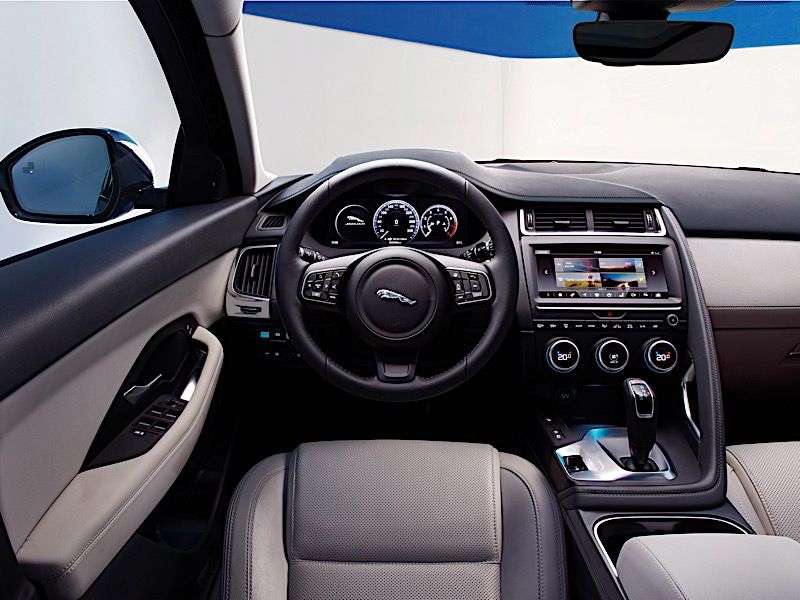
Photo by Jaguar Land Rover
4. Jaguar’s 10-inch touchscreen infotainment is standard.
Even among premium market vehicles, typical infotainment screen sizes settle somewhere around 7 or 8 inches. The E-Pace not only offers a much wider display (at 10 inches), but it includes the InControl Touch Pro system as standard equipment.
The large monitor features crisp visuals, an intuitive tile layout, and a robust set of apps (including Apple CarPlay and Android Auto). The system works with both an available full-color head-up display and an optional 12.3-inch digital instrument closer that puts essential navigation and telemetry data right in front of the driver.
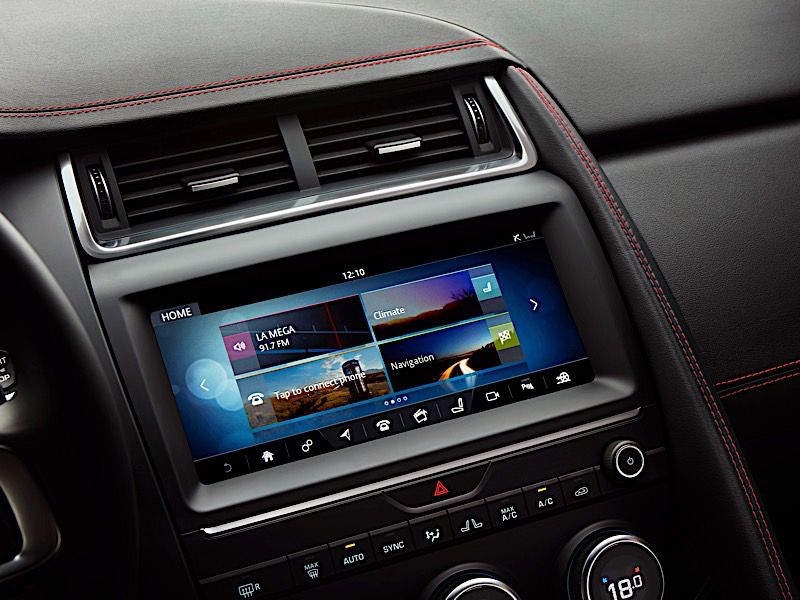
Photo by Jaguar Land Rover
3. It has off-road cruise control.
When your family member is one of the most capable off-road vehicle manufacturers in history, its hand-me-downs tend to be pretty good. And because the E-Pace is based on the aforementioned Range Rover Evoque, it inherits a series of computer-optimized drive modes based on available traction.
Selecting the Rain, Ice, and Snow drive mode (one of four available settings) enables Jaguar’s "All Surface Progress Control" to function like low-speed cruise control. Freed from manipulating the gas and brake, drivers can focus on precise steering input during particularly tricky off-road driving.
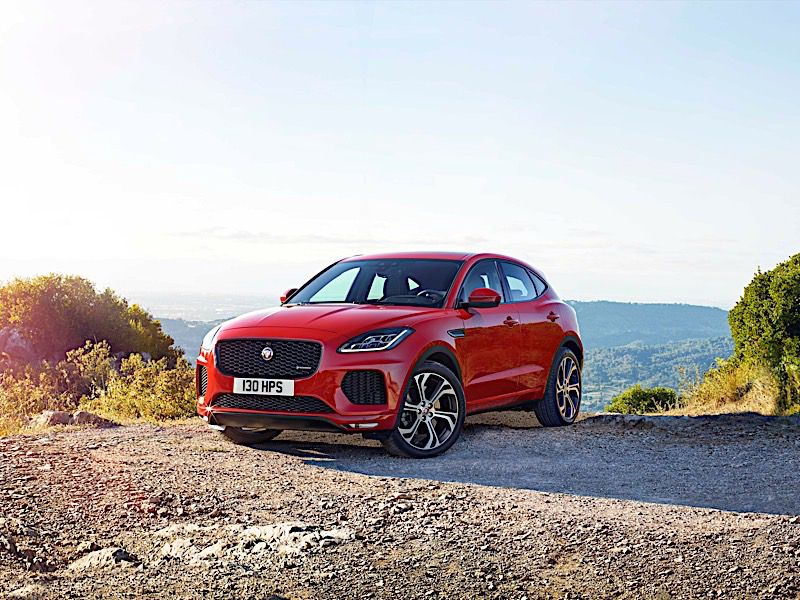
Photo by Jaguar Land Rover
2. The E-Pace is the first Jaguar to be built outside of the U.K.
Jaguar’s growing popularity has created many new opportunities for the brand, but not without growing pains. With the company’s British factories at capacity, Jaguar has been forced to look elsewhere to meet production demands. That means the E-Pace is being assembled in Graz, Austria, under license by Magna Steyr. Jaguar joins a number of premium manufacturers that use Magna Steyr’s facilities, including BMW and Mercedes-Benz.
In a statement, Jaguar Land Rover’s CEO, Ralf Speth assured customers that the U.K. “will remain the center of our design, engineering, and manufacturing capabilities.” In other words, fear not: Jaguar products will still be very British.
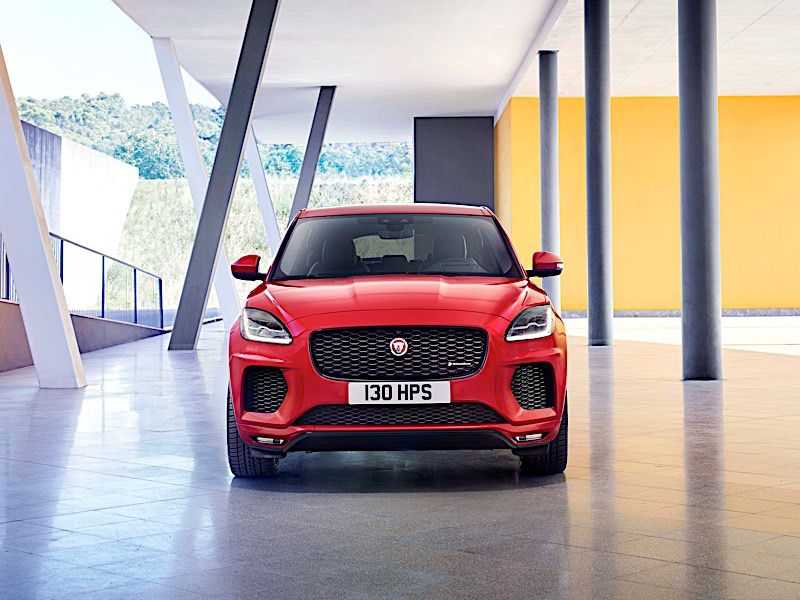
Photo by Jaguar Land Rover
1. This may be Jaguar’s most important vehicle yet.
Jaguar estimates that 80 percent of E-Pace buyers will be new to the brand, yet the company is hesitant to say the SUV will be its best-selling model. Rather, Jaguar envisions the F-Pace will continue to lead sales, followed by the E-Pace.
While we’re all for conservative estimates, based on the popularity of the premium/performance compact SUV segment (and its relatively affordable price), we anticipate the E-Pace soon taking over as the brand’s best seller. Furthermore, the E-Pace could propel Jaguar closer than ever to rivals like BMW, Mercedes-Benz, and Audi. Time will tell.
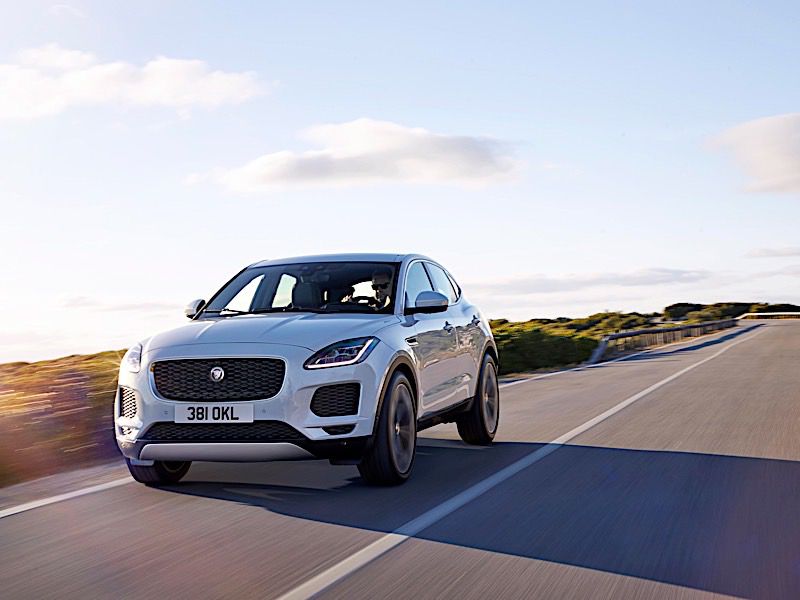
Photo by Jaguar Land Rover